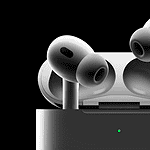Taking screenshots on Windows has become essential for sharing information, troubleshooting problems, and saving digital memories. Press Windows key + PrtSc to instantly capture and save the entire screen as a PNG file in the Screenshots folder within Pictures.
Screenshots serve multiple purposes, from documenting software bugs to preserving important conversations. Windows offers several built-in methods to capture screens, each designed for specific needs.
How to Take Screenshots on Windows, Mac, or Linux
Capturing screenshots is a useful skill for saving information, troubleshooting, or sharing content. Here’s how to do it on the three major desktop operating systems.
Taking Screenshots on Windows
1. Using Print Screen (PrtScn) Key
- Full Screen: Press
PrtScnto capture the entire screen. The image is copied to the clipboard. Paste it (Ctrl + V) into Paint or another image editor to save. - Active Window: Press
Alt + PrtScnto capture the currently active window to the clipboard. - Save Automatically: Press
Windows key + PrtScnto capture the full screen and save it automatically toPictures > Screenshots.
2. Using Snipping Tool / Snip & Sketch
- Open Snip & Sketch (Windows 10/11) via Start menu.
- Click New to select the area you want to capture.
- The screenshot opens in the app for annotation and saving.
3. Using Game Bar (Windows 10/11)
- Press
Windows key + Gto open Game Bar. - Click the camera icon or press
Windows key + Alt + PrtScnto capture the screen.
Taking Screenshots on Mac
1. Capture Entire Screen
- Press
Command (⌘) + Shift + 3. - The screenshot saves automatically to your desktop.
2. Capture Selected Portion
- Press
Command (⌘) + Shift + 4. - Drag to select the area you want to capture.
- Release the mouse to take the screenshot, saved to desktop.
3. Capture a Window
- Press
Command (⌘) + Shift + 4, then press theSpacebar. - Click the window to capture it.
4. Screenshot Toolbar (macOS Mojave and later)
- Press
Command (⌘) + Shift + 5to open the screenshot toolbar. - Choose to capture entire screen, window, or selected portion.
- Options for saving and timer are available.
Taking Screenshots on Linux
(Note: Methods may vary slightly depending on the desktop environment.)
1. Using Print Screen Key
- Full Screen: Press
PrtScnto capture the entire screen. The image is usually saved to the Pictures folder or copied to clipboard. - Active Window: Press
Alt + PrtScnto capture the current window. - Selected Area: Press
Shift + PrtScnto select an area to capture.
2. Using Screenshot Tools
- Many Linux distros have built-in tools like GNOME Screenshot or KSnapshot.
- Open the screenshot tool from the applications menu.
- Choose to capture full screen, window, or selection.
3. Using Command Line
- You can use tools like
scrotorimport(from ImageMagick) to capture screenshots via terminal.
Summary Table
| OS | Full Screen Screenshot | Active Window Screenshot | Selected Area Screenshot |
|---|---|---|---|
| Windows | PrtScn or Win + PrtScn | Alt + PrtScn | Snip & Sketch or Win + Shift + S |
| Mac | Cmd + Shift + 3 | Cmd + Shift + 4, then Space | Cmd + Shift + 4 |
| Linux | PrtScn | Alt + PrtScn | Shift + PrtScn |
Key Takeaways
- Screenshots automatically save to the Pictures folder when using Windows key + PrtSc
- Multiple screenshot methods exist for different capture needs
- Built-in Windows tools make editing and sharing screenshots simple
Fundamentals of Taking Screenshots
Screenshots let users capture and save exactly what appears on their computer screen through simple keyboard commands or built-in tools.
Understanding Screenshots
A screenshot creates a digital image copy of everything visible on a computer screen. The image file saves in PNG format by default on most systems.
Users can capture the entire screen, a specific window, or a custom rectangular area. The captured image stores automatically to a designated folder or copies to the system clipboard.
Modern computers offer multiple screenshot methods. Some systems save images directly while others require pasting the capture into an image editor first.
The Role of Keyboard Shortcuts
The Print Screen (PrtScn) key serves as the primary screenshot command on Windows computers. Pressing this key alone copies the full screen to the clipboard.
Common Windows Screenshot Commands:
- Windows + PrtScn: Saves full screen directly to Pictures > Screenshots
- Alt + PrtScn: Captures active window only
- Windows + Shift + S: Opens Snipping Tool for custom captures
Mac Screenshot Commands:
- Command + Shift + 3: Full screen capture
- Command + Shift + 4: Custom area selection
- Command + Shift + 4 + Space: Active window capture
These keyboard combinations save time and provide precise control over screen captures.
Frequently Asked Questions
Screenshots can be captured through various keyboard shortcuts and built-in tools across different operating systems and devices.
How can I take a screenshot on a Windows 10 system?
Press the Windows key + PrtScn to capture the entire screen. The image saves automatically to the Screenshots folder in Pictures.
The Snipping Tool offers more precise captures. Open it through the Start menu or by pressing Windows key + Shift + S.
What methods are available for capturing a screenshot on an Android device?
Press the Power and Volume Down buttons simultaneously. The screen will flash to confirm the capture.
Some Android devices support palm swipe gestures. Enable this feature in Settings under Advanced Features.
What are the steps to take a screenshot in Windows 7?
Press the PrtScn key to copy the screen to the clipboard. Open Paint and press Ctrl + V to paste the image.
To save the screenshot, click File > Save and choose a location on the computer.
Which key combination is used to take a screenshot on a PC?
PrtScn captures the entire screen. Alt + PrtScn captures only the active window.
Windows key + Shift + S opens the Snipping Tool for selective captures.
What is the procedure for taking a screenshot on a Windows 11 computer?
Press Windows key + PrtScn to save a full screen capture to the Pictures > Screenshots folder.
The Snipping Tool provides options for rectangular, free-form, window, and full-screen captures.
How does one capture a screenshot using a Samsung Android smartphone?
Press the Power and Volume Down buttons at the same time. A preview appears briefly at the bottom of the screen.
Swipe the edge of your palm across the screen from right to left. Enable this feature first in Settings under Advanced Features.
Smart Select allows capturing specific portions of the screen. Access it through the Edge Panel.







